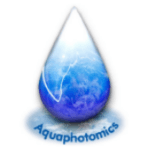
Using near-infrared spectroscopy and aquaphotomics, scientists have conducted a study of the molecular properties of water used to make cement and discovered that the molecular structure of water matters!
When engineers need concrete, they generally need it to have specific characteristics. It needs to be strong, but not too heavy, firm enough to bear the loads, but flexible enough to handle changing stress forces. The traits vary with each application, and subsequently, so does the mix “recipe”.
Within the engineering standards, there are multiple options for each component of the concrete mix, and water, one of the most influential parts of a concrete mix, is no exception. There are set tolerances for the chemical properties of types of water generally considered usable for concrete mixes, and as long as a water is within those tolerances, engineers often don’t attribute much significance to their choice of water. This study shows that might be a critical oversight.
Researchers at the Aquaphotomics Research Department (Kobe University, Japan) in partnership with researchers at the Department of Urban Design and Engineering (Osaka Metropolitan University, Japan) and ISOL Technical Corporation (Kyoto, Japan) conducted a study on different waters used in cement production. They identified a problem: concrete prepared in different cities using the same mixes, from the same company, with different tap waters approved under engineering standards were hardening with different mechanical properties. The only difference in the concrete mixes was the source of water, so the researchers wanted to look deeper into the role of water in the cement and the variation of molecular properties allowed by the design standards.
The researchers analyzed the near-infrared spectra of four types of concrete mixing water, of concrete mixed with each water type, and the concrete samples’ thermal strain and dry shrinkage. They used near infrared spectroscopy and aquaphotomics to characterize the waters and the cement mortar, monitoring changes in water molecular structure within the concrete as it hardened.
They compared four types of mixing water: distilled water, tap water, mineral spring water from a shallow source, and mineral spring water combining shallow and deep sourced water. They measured the spectra of each water sample with a high-precision, high-accuracy spectrometer, and they mixed concrete samples according to the Ordinary Portland cement Japanese Industrial Standards for physical testing methods. They then measured the near-infrared (NIR) spectra of each concrete sample as they dried in air on the day they were mixed and after 1, 3, and 7 days. They also monitored the internal temperature and thermal strain of each sample during the first 24 hours of curing and the dry shrinkage strain for 91 days.
The researchers analyzed the acquired spectral data, thermal strain, and dry shrinkage, and determined that the mechanical properties of the cement were dependent on the water type used. The differences in the molecular properties of the waters affected the hydration and curing of the cements, which affected the properties of the hardened cement. The mineral waters produced cement with a less porous and more compact structure, with considerably less drying shrinkage strain. Because drying shrinkage strain contributes to durability issues in hardened cement, the mineral mixing waters could be considered superior to the distilled and tap waters.
This study has significant implications for the production of concrete in practical and research settings. First, this study showed that the current design standards which do not account for water molecular structure may need to be revised.
Second, this study identified 18 water absorbance bands which could be used as standard Water Matrix Coordinates (WAMACs) – the bands that carry important information about the state of cement mortar. In combination, the WAMACs can be used to develop Water Spectral Patterns (WASPs) for cement mortar – a single, visual tool that can give information about several properties of the material simultaneously. By studying and analyzing WASPs, understanding of physical and chemical processes within the mortars and cements can quickly be broadened and deepened. The potential for research application of the aquaphotomics method in further studies is vast.
Finally, the aquaphotomics characterization of cement hydration used in this research was presented as a pioneering method that can provide extensive insights into these underlying mechanisms in a non-invasive, non-destructive, rapid, and accessible way. Even in current, state-of-the-art cement mixing and testing, there is no other way to access this level of insight. This method can be used to accurately predict the properties of hardened cement immediately after mixing, which is not only completely novel but would be highly valuable in practical applications. The development of known standards such as WAMACs and WASPs through further research would enable quicker and more accurate description of cement characteristics. Using these methods, industry professionals could cost-effectively and rapidly reduce errors and improve the results of concrete formulation, mixing, and construction.
READ MORE: Aquaphotomic Study of Effects of Different Mixing Waters on the Properties of Cement Mortar [MDPI]
